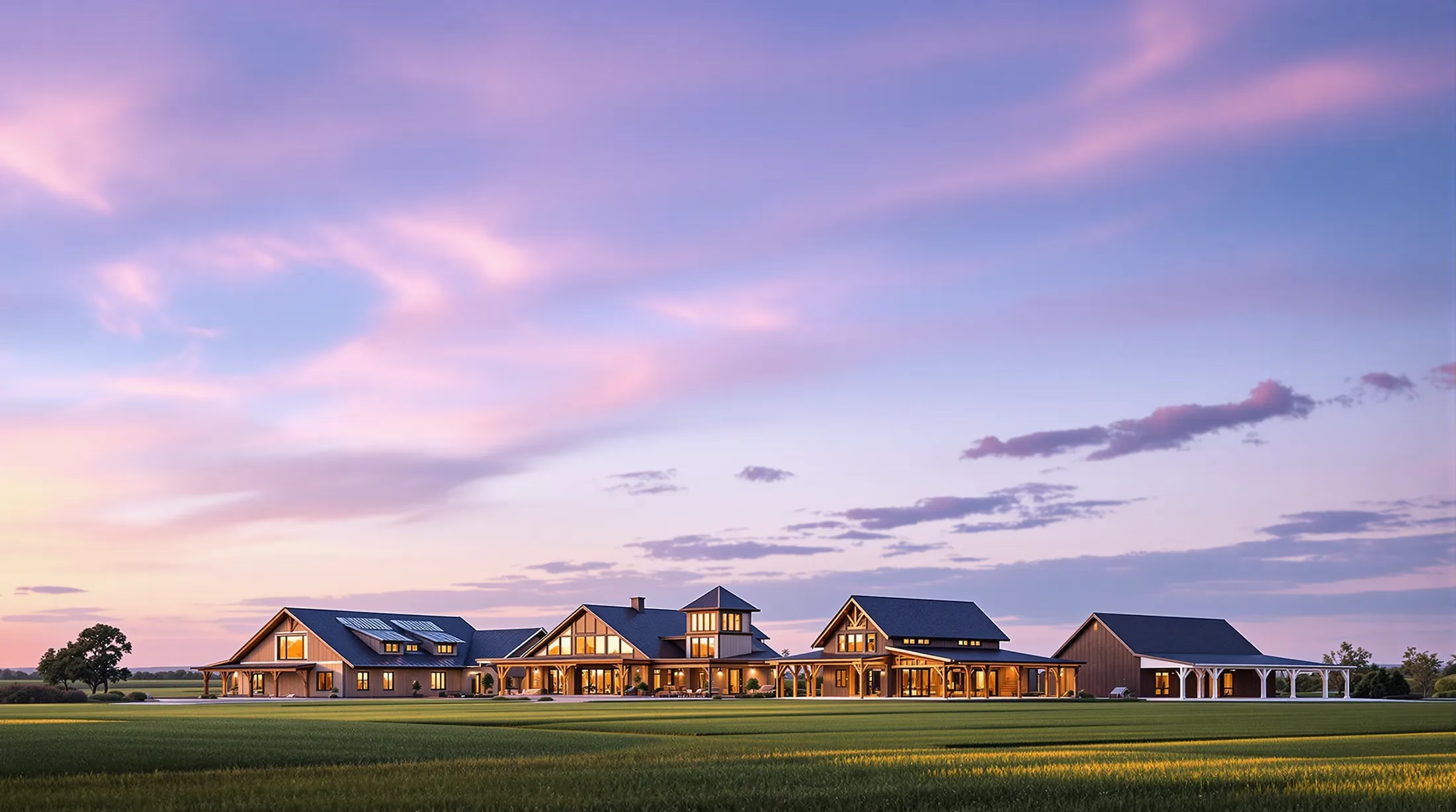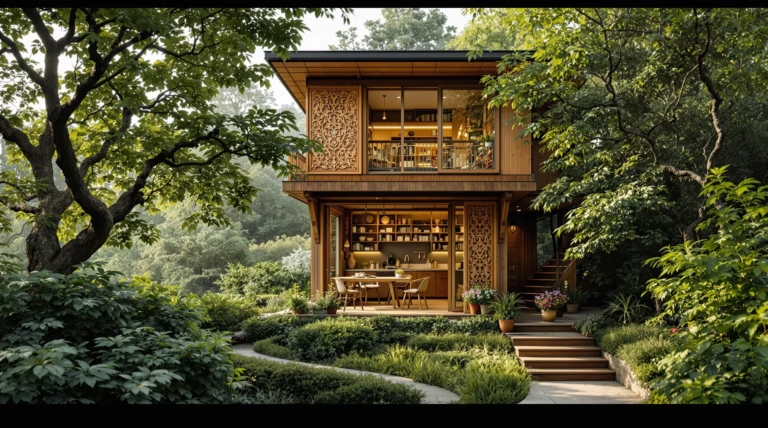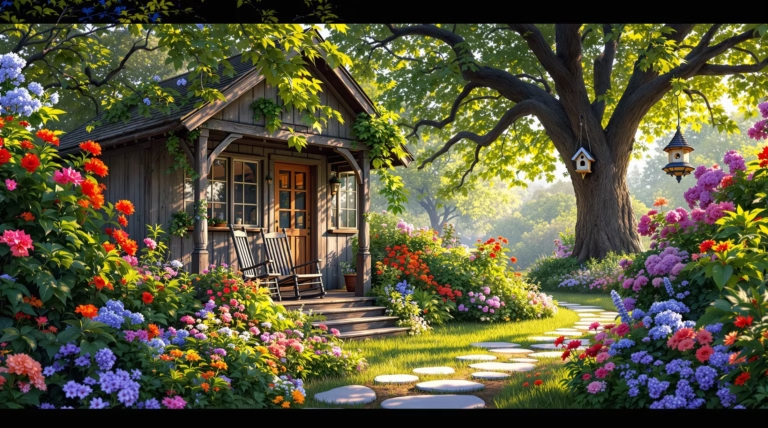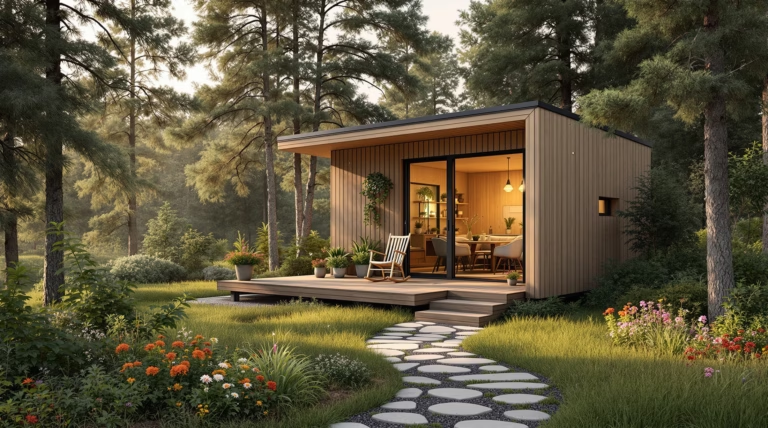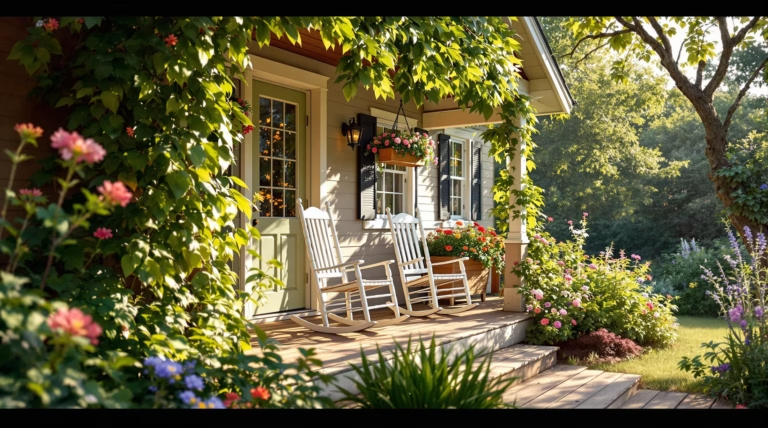Barndominium Roof: Choosing the Best Style and Material
Planning to build a barndominium? The roof style you choose will significantly impact not only your home’s appearance but also its functionality and longevity. Let’s explore the most effective roof designs that combine aesthetic appeal with practical benefits for your barndominium project.
Understanding Barndominium Roof Styles
Selecting the right roof style for your barndominium is one of the most critical decisions in the building process. Each style offers distinct advantages, from aesthetic appeal to practical functionality. The roof not only defines the overall look of your structure but also impacts its durability, energy efficiency, and space utilization.
While the gable roof remains the most common choice for barndominiums due to its simplicity and effectiveness, several other options can better suit specific needs and regional conditions. Understanding the pros and cons of each style will help you make an informed decision that balances your design preferences with practical considerations like climate adaptability and budget constraints.
Gable Roof: A Classic Choice
The gable roof stands as the quintessential choice for barndominiums, characterized by its triangular shape and clean lines. This design features two sloping sides that meet at a ridge, creating a simple yet effective water-shedding system.
- Excellent snow-shedding capabilities in regions with heavy snowfall
- Creates spacious attic area for storage or potential living space
- Cost-effective construction and maintenance
- Proven reliability and timeless appearance
- Simple yet effective water drainage system
Monitor Roof: Enhancing Natural Light
The monitor roof distinguishes itself with a raised center section flanked by lower roof sections on either side. This elevated central portion typically includes windows that transform the roof into a source of abundant natural light.
- Superior natural lighting through elevated windows
- Enhanced ventilation through height differential
- Potential for reduced cooling costs
- Ideal for creating dramatic vaulted ceilings
- Perfect for loft space integration
Gambrel Roof: Maximizing Space
The gambrel roof, instantly recognizable from traditional barn architecture, features four slopes instead of two—with steeper lower slopes and shallower upper ones. This ingenious design maximizes usable interior space without increasing the overall height of the structure.
- Maximizes upper-level living space
- Creates full-height rooms on the second floor
- Excellent drainage capabilities
- Traditional barn aesthetic appeal
- Ideal for two-story layouts
Shed Roof: Simplicity and Functionality
The shed roof employs a single-slope design that descends from one side of the structure to the other, creating a clean, contemporary profile. This minimalist approach has evolved from its utilitarian origins to become a sought-after option for modern barndominiums.
- Simple and cost-effective construction
- Efficient water drainage system
- Perfect for smaller structures and additions
- Creates interesting interior height variations
- Ideal for modern architectural styles
Contiguous Roof: Durability in Harsh Climates
The contiguous roof design offers exceptional performance in challenging weather environments, featuring uninterrupted surfaces that minimize potential weak points. This configuration creates superior resistance against powerful winds, heavy rainfall, and other severe weather conditions.
- Superior weather resistance in extreme conditions
- Excellent for hurricane-prone areas
- Enhanced structural integrity
- Minimal maintenance requirements
- Superior snow load capacity
Choosing the Right Material for Your Barndominium Roof
Selecting the optimal roofing material for your barndominium requires careful consideration of multiple factors that impact both immediate construction and long-term ownership. Your chosen material must withstand local weather conditions while complementing the structure’s aesthetic and aligning with your budget without compromising quality.
While metal roofing dominates barndominium construction due to its compatibility with steel-framed structures, alternative materials offer unique advantages worth exploring. Climate considerations should guide your decision, as properties in hurricane-prone areas require different solutions than those in regions with heavy snowfall or extreme heat.
Metal Roofing: Modern and Durable
- Exceptional lifespan of 50+ years with proper installation
- Creates cohesive building envelope with steel framing
- Superior energy efficiency through reflective surfaces
- Enhanced protection with specialized UV-resistant coatings
- Insurance premium discounts due to fire and storm resistance
- Fully recyclable material for environmental sustainability
Asphalt Shingles: Affordable Versatility
| Advantages | Considerations |
|---|---|
| 40-60% lower cost than metal | Shorter lifespan (25-30 years) |
| Wide range of colors and textures | Lower energy efficiency |
| Wind resistance up to 130 mph | Higher heat absorption |
| Simple installation process | Increased cooling demands in hot climates |
Clay and Concrete Tiles: Long-lasting Elegance
- Exceptional longevity of 75-100 years with minimal maintenance
- Distinctive Mediterranean, Spanish, or Southwestern aesthetics
- Class A fire rating for superior protection
- Natural insulation through thermal mass properties
- Excellent temperature regulation in variable climates
However, tile roofing requires additional structural support due to its weight and involves installation costs 2-3 times higher than asphalt shingles. These factors should be considered during the initial design phase.
Innovative Roofing Options for Barndominiums
Modern barndominium design continues to evolve, introducing innovative roofing solutions that enhance energy efficiency and reduce environmental impact. While traditional metal roofing remains popular, new alternatives offer additional benefits worth considering for both immediate functionality and long-term sustainability.
Green Roofs: Eco-friendly and Insulating
- Natural thermal regulation providing 15-30% energy savings
- Effective rainwater management and reduced runoff
- Creation of wildlife habitats supporting local biodiversity
- Enhanced insulation performance year-round
- Striking visual appeal with environmental benefits
Solar Roofing: Harnessing Clean Energy
Solar roofing systems have evolved from bulky panels to sleek, integrated solutions that seamlessly blend with barndominium aesthetics. Modern installations include solar shingles mimicking traditional roofing materials and thin-film panels that adhere directly to metal roofing, maintaining the clean lines favored by barndominium owners. These systems efficiently convert sunlight into usable electricity, with surplus power often qualifying for utility credits through net metering programs.
- Federal tax credits cover 30% of installation costs
- Additional state incentives available for reduced initial investment
- 7-10 year average payback period through energy savings
- 25-30 year system lifespan with minimal maintenance
- Significant property value enhancement
- Optimal performance for south-facing roof surfaces
Cool Roofs: Reducing Cooling Costs
| Feature | Benefit |
|---|---|
| Reflective Surface Technology | Reflects up to 85% of solar energy vs. 35% for standard materials |
| Temperature Impact | 20-40°F reduction in roof surface temperature |
| Energy Savings | 15-20% reduction in cooling costs in hot climates |
| Environmental Impact | Reduces urban heat island effect |
Maintaining Your Barndominium Roof
The appeal of barndominium roofing extends beyond aesthetics to its practical maintenance requirements. Metal roofing, in particular, offers significantly reduced upkeep compared to traditional homes, making it an ideal choice for homeowners seeking durability without constant maintenance demands.
Regular Inspections and Drainage Management
- Conduct bi-annual inspections in spring and fall
- Perform additional checks after severe weather events
- Monitor for loose fasteners and damaged panels
- Inspect seals around vents and chimneys
- Check for rust or corrosion signs
- Maintain clear gutters and downspouts
- Consider gutter guards in high-rainfall areas
Understanding Roof Lifespan and Replacement
| Roofing Type | Expected Lifespan |
|---|---|
| Premium Metal Roofing | 40-70 years |
| Architectural Shingles | 25-30 years |
| Basic Three-Tab Shingles | 15-20 years |
When evaluating repair versus replacement, consider both roof age and damage extent. Minor issues on newer roofs often warrant simple repairs, while widespread problems or aging systems may justify complete replacement. This transition presents an opportunity to upgrade to more efficient or sustainable materials that enhance long-term performance and energy efficiency.

